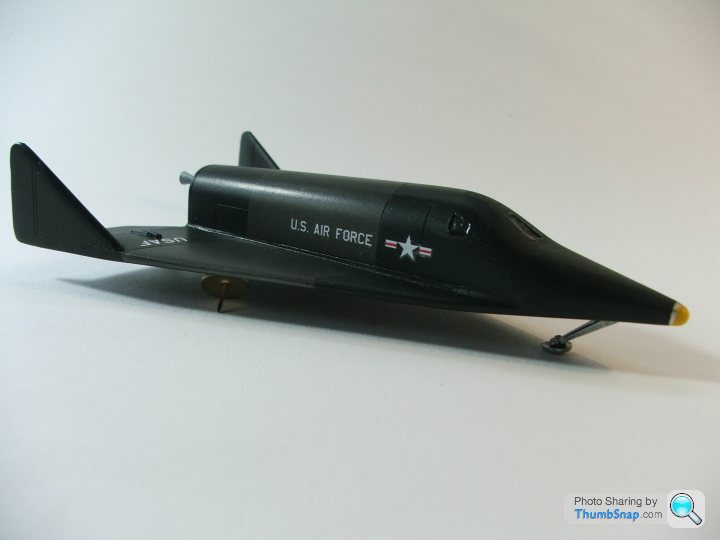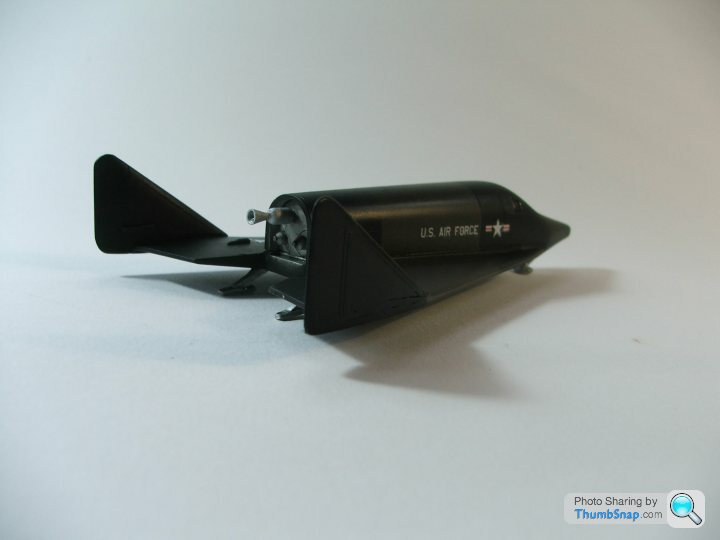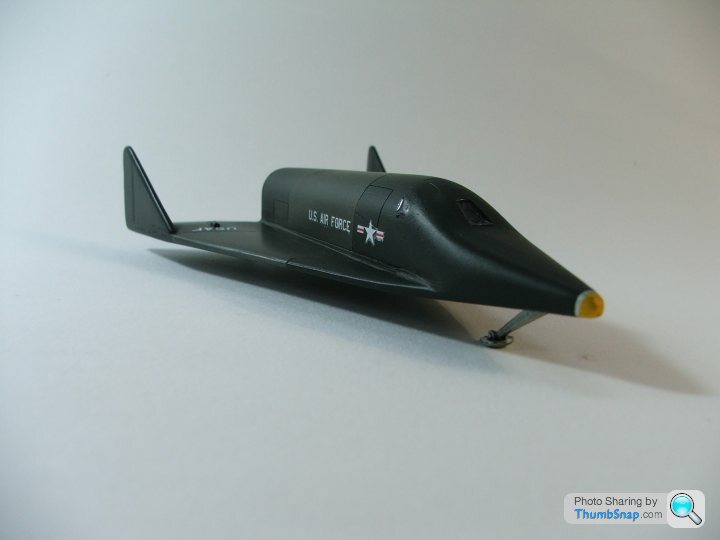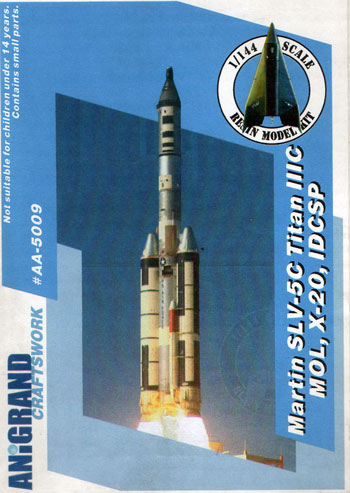Boeing X-20 Dyna-Soar
Discussion
Back at the bench after almost four month's absence due to work commitments. I was looking for a simple but different project and decided this might be the answer.
The Boeing X-20 Dyna-Soar (short for Dynamic Soaring) was an early design of spaceplane. The project was instigated in the mid 1950s and drew on earlier 1940s work carried out in Germany by Dr Eugene Sanger and Irene Bredt. The USAF initially envisaged it as a quick response bomber which could do one complete revolution of the earth at slightly subortbital speed but extending its range by skipping off the top of the atmosphere. The launch vehicle would have been a Titan II.
A later permutation saw it become a fully orbital spaceplane - a forerunner of the later Space Shuttle. For orbital missions, the launch vehicle would have been the more powerful Titan IIIB.
The prototype was under construction when the project was cancelled in 1963. Astronauts had already been selected for the X-20 programme, including a certain Neil A Armstrong. Some went back to "normal" test flying. Armstrong (already a NASA pilot) joined the Gemini programme.
The kit is by Anigrand and is made entirely of resin. There are very few parts. Even though a basic interior is provided, the windows are so small none of it will be seen.
Because the real thing was never actually built (apart from a number of components and mock-ups), it's hard to say how accurate the Anigrand kit is. I have to say that there are some significant differences between the model and the final mock-up configurations. But, I'm sure the mock-ups would have differed from the final vehicle anyway.
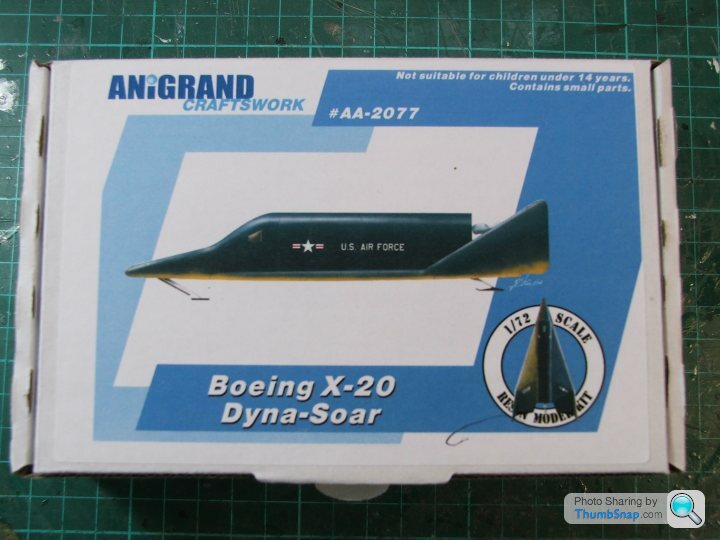

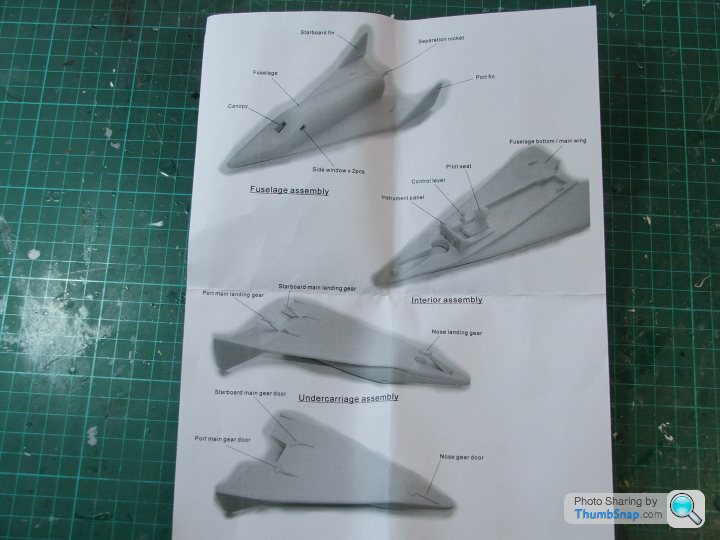
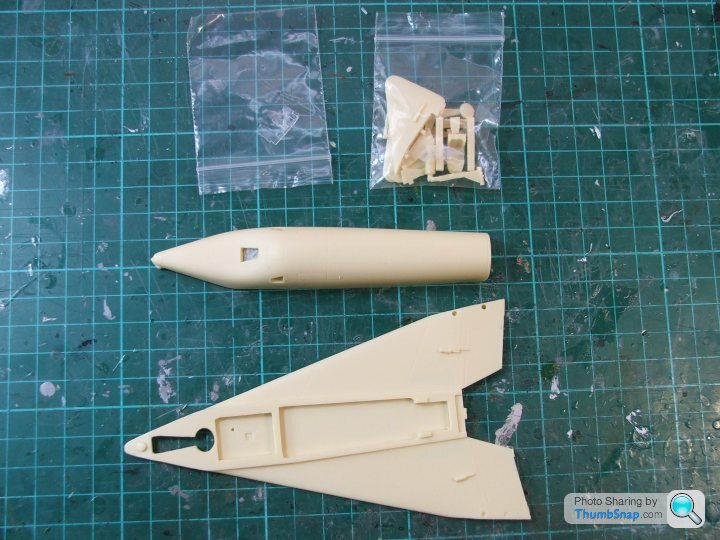
Because of the low parts count, assembly was quite quick. Being a short run resin kit, fit was by no means perfect and various holes needed to be drilled and widened so that the locating lugs properly seated. Also, there was a bit of warpage in the two pain parts (the upper and lower fuselage halves) so they had to be clamped quite forcefully to ensure they glued straight.
A reasonable amount of filler was required which I have begun sanding back and blending. Hopefully, by tomorrow, I can finish that off and get to the painting stage. All the mock ups were finished in black - a bit like the X-15. I wonder if that is what they would have looked like if they had ever entered service?
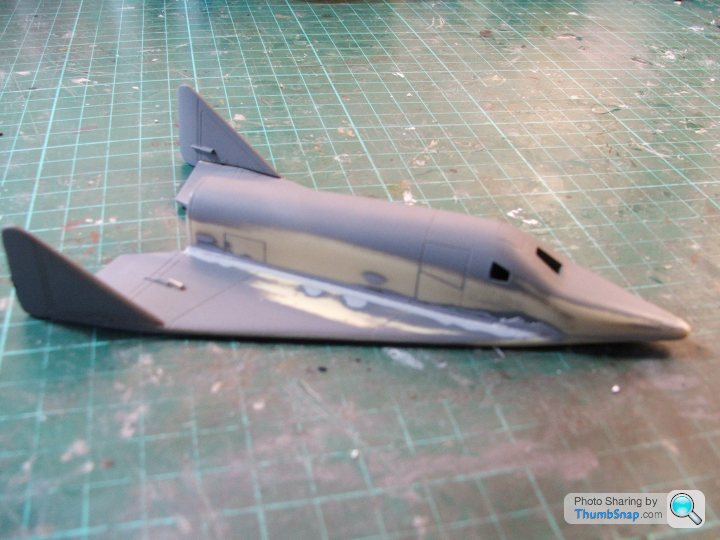
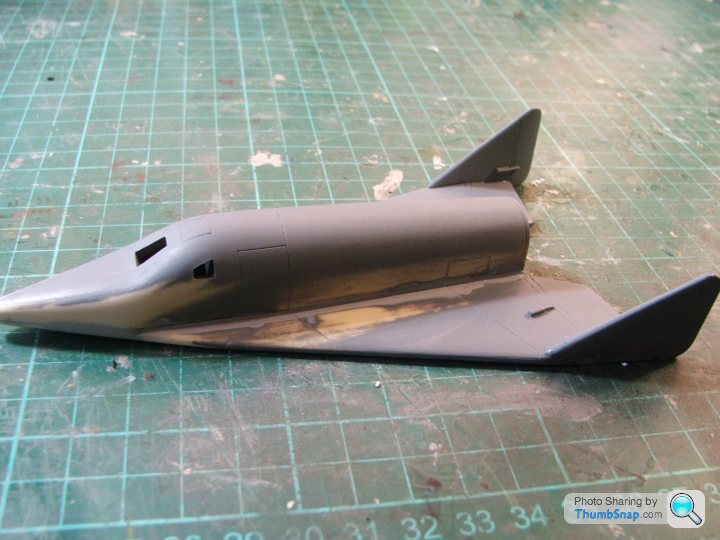
The Boeing X-20 Dyna-Soar (short for Dynamic Soaring) was an early design of spaceplane. The project was instigated in the mid 1950s and drew on earlier 1940s work carried out in Germany by Dr Eugene Sanger and Irene Bredt. The USAF initially envisaged it as a quick response bomber which could do one complete revolution of the earth at slightly subortbital speed but extending its range by skipping off the top of the atmosphere. The launch vehicle would have been a Titan II.
A later permutation saw it become a fully orbital spaceplane - a forerunner of the later Space Shuttle. For orbital missions, the launch vehicle would have been the more powerful Titan IIIB.
The prototype was under construction when the project was cancelled in 1963. Astronauts had already been selected for the X-20 programme, including a certain Neil A Armstrong. Some went back to "normal" test flying. Armstrong (already a NASA pilot) joined the Gemini programme.
The kit is by Anigrand and is made entirely of resin. There are very few parts. Even though a basic interior is provided, the windows are so small none of it will be seen.
Because the real thing was never actually built (apart from a number of components and mock-ups), it's hard to say how accurate the Anigrand kit is. I have to say that there are some significant differences between the model and the final mock-up configurations. But, I'm sure the mock-ups would have differed from the final vehicle anyway.




Because of the low parts count, assembly was quite quick. Being a short run resin kit, fit was by no means perfect and various holes needed to be drilled and widened so that the locating lugs properly seated. Also, there was a bit of warpage in the two pain parts (the upper and lower fuselage halves) so they had to be clamped quite forcefully to ensure they glued straight.
A reasonable amount of filler was required which I have begun sanding back and blending. Hopefully, by tomorrow, I can finish that off and get to the painting stage. All the mock ups were finished in black - a bit like the X-15. I wonder if that is what they would have looked like if they had ever entered service?


It's only a single seater too. I suppose by the late 1950s/early 1960s a small enough nuclear device could have been fitted into it.
I think the notion of it being used as a bona fide bomber faded as the design progressed. I am pretty sure the main reason the project continued as far as it did was because the US Air Force wanted their own independent manned spaceflight capability - nothing to do with NASA. In the end, as the awareness that a lot of what the DoD needed to get done in space could be done by unmanned satellites, the need for something like Dyna-Soar faded.
I think the notion of it being used as a bona fide bomber faded as the design progressed. I am pretty sure the main reason the project continued as far as it did was because the US Air Force wanted their own independent manned spaceflight capability - nothing to do with NASA. In the end, as the awareness that a lot of what the DoD needed to get done in space could be done by unmanned satellites, the need for something like Dyna-Soar faded.
Gassing Station | Scale Models | Top of Page | What's New | My Stuff




